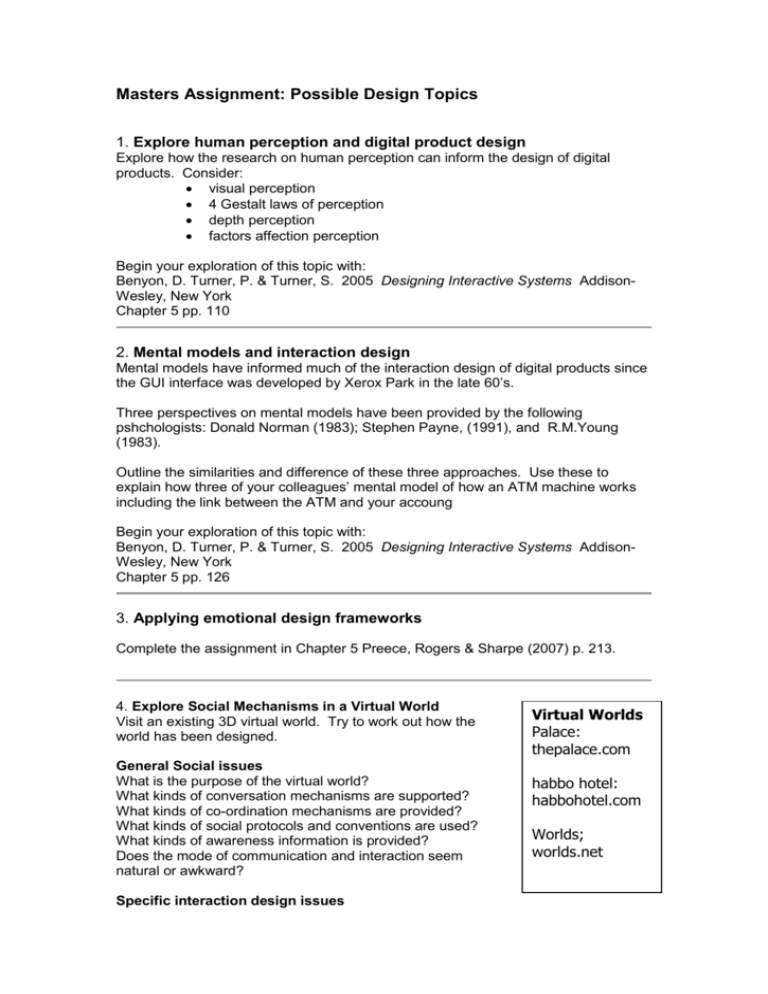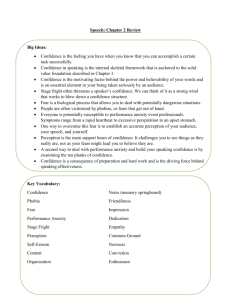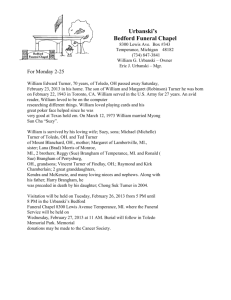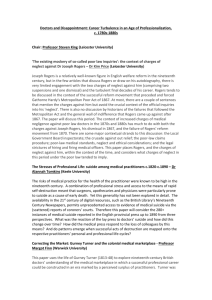Masters Assignment: Negotiated project
advertisement

Masters Assignment: Possible Design Topics 1. Explore human perception and digital product design Explore how the research on human perception can inform the design of digital products. Consider: visual perception 4 Gestalt laws of perception depth perception factors affection perception Begin your exploration of this topic with: Benyon, D. Turner, P. & Turner, S. 2005 Designing Interactive Systems AddisonWesley, New York Chapter 5 pp. 110 2. Mental models and interaction design Mental models have informed much of the interaction design of digital products since the GUI interface was developed by Xerox Park in the late 60’s. Three perspectives on mental models have been provided by the following pshchologists: Donald Norman (1983); Stephen Payne, (1991), and R.M.Young (1983). Outline the similarities and difference of these three approaches. Use these to explain how three of your colleagues’ mental model of how an ATM machine works including the link between the ATM and your accoung Begin your exploration of this topic with: Benyon, D. Turner, P. & Turner, S. 2005 Designing Interactive Systems AddisonWesley, New York Chapter 5 pp. 126 3. Applying emotional design frameworks Complete the assignment in Chapter 5 Preece, Rogers & Sharpe (2007) p. 213. 4. Explore Social Mechanisms in a Virtual World Visit an existing 3D virtual world. Try to work out how the world has been designed. General Social issues What is the purpose of the virtual world? What kinds of conversation mechanisms are supported? What kinds of co-ordination mechanisms are provided? What kinds of social protocols and conventions are used? What kinds of awareness information is provided? Does the mode of communication and interaction seem natural or awkward? Specific interaction design issues Virtual Worlds Palace: thepalace.com habbo hotel: habbohotel.com Worlds; worlds.net What form of interaction and communication is supported, eg text/audio/video? What other visualisations are included? What information do they convey? How do users switch between different modes of interaction, eg exploring and chatting? Is the switch seamless? Are there any social phenomena that occur specific to the context of the virtual world that wouldn’t happen in face-to-face settings, eg flaming? Design issues What other features might you include in the virtual work to improve communication and collaboration Assignment in Chapter 4 Preece, Rogers & Sharpe (2007) p. 213.









